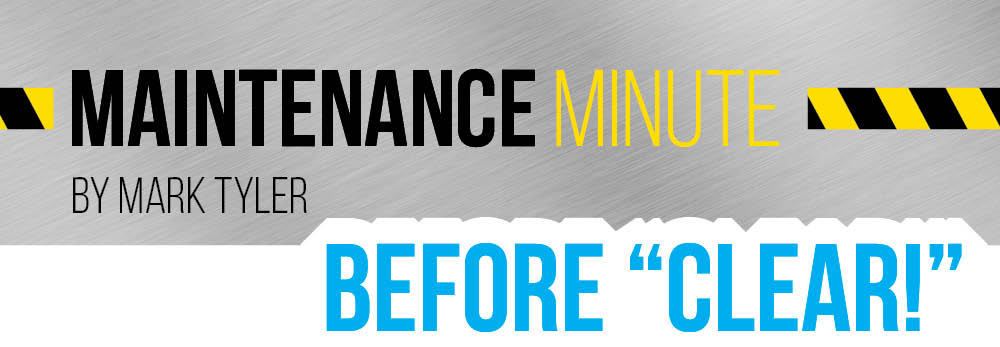|
Oct
27
2023
|
|
Posted 2 years 51 days ago ago by Admin
|
|

By Mark Tyler
As the pilot straps in the helicopter, he or she begins to go through the checklist and starts moving switches to their proper positions. Battery on, fuel pump on, and throttle set. The last thing a pilot does before he engages the start switch is to look over his shoulder and yell, “Clear!”
Anyone that has been in the helicopter business for longer than a minute understands that “Clear!” means the pilot is announcing that he is about to bring the beast to life, and everyone should be clear of the turning rotors. The question that I would like to address is: What happens before “Clear!”
Many operations require that a daily inspection be performed prior to the next flight of a company-owned helicopter. The danger of daily inspections is that they become routine and boring. They can become viewed as a necessary evil or as just something else to do. Honestly, in my opinion, the daily inspection is perhaps the most important check that can be accomplished prior to the aircraft breaking ground.
When following the daily inspection checklist, you begin on one side of the aircraft and conclude on the other side. I like to reverse the process, if only to cause my eyes to see differently and my brain re-engage from the mundane. Some mechanics approach the daily inspection with an attitude of doing the minimum because the pilot is coming along next to perform a preflight. Some pilots approach the preflight with an attitude of doing the minimum since the mechanic just performed a daily.
We should all perform our responsibilities with a professional attitude and excellence. Some of the discrepancies I have found while performing a daily inspection were discovered simply by reviewing the status sheet. These include overflown inspections and components. Visual inspections reveal bad bearings, leaking oil lines, incorrect hardware, broken windows and windshields, and bird nests. Once I even found a bullet that had fallen from the sky, came through the roof and rested in the overhead circuit breaker panel. And not to be forgotten are any Airworthiness Directives or ICAs that may be due.
The goal is for everyone to go home safely at the end of the day, so before the aircraft breaks ground, we must check a lot of boxes. Duties must be performed intentionally. It is not just the pilots counting on us. Our work has a ripple effect, and it is imperative that we take ownership of every task we perform. Then, when the pilot straps in, looks over his shoulder and yells, “Clear!” we can walk away knowing that we did everything possible to complete a safe mission.
About the author: Mark Tyler dedicated the majority of his career serving the helicopter EMS community from Base Mechanic to Director of Maintenance. As Vice President & General Manager of Precision Aircraft Services, Mark now serves helicopter operators from many sectors to include Air Ambulance, Law Enforcement, Private Owners, etc. When not at work, Mark can be found spending time with his family or sitting in a tree stand.
READ MORE ROTOR PRO: https://justhelicopters.com/Magazine
WATCH ROTOR PRO YOUTUBE CHANNEL: https://buff.ly/3Md0T3y
You can also find us on
Instagram - https://www.instagram.com/rotorpro1
Facebook - https://www.facebook.com/rotorpro1
Twitter - https://twitter.com/justhelicopters
LinkedIn - https://www.linkedin.com/company/rotorpro1